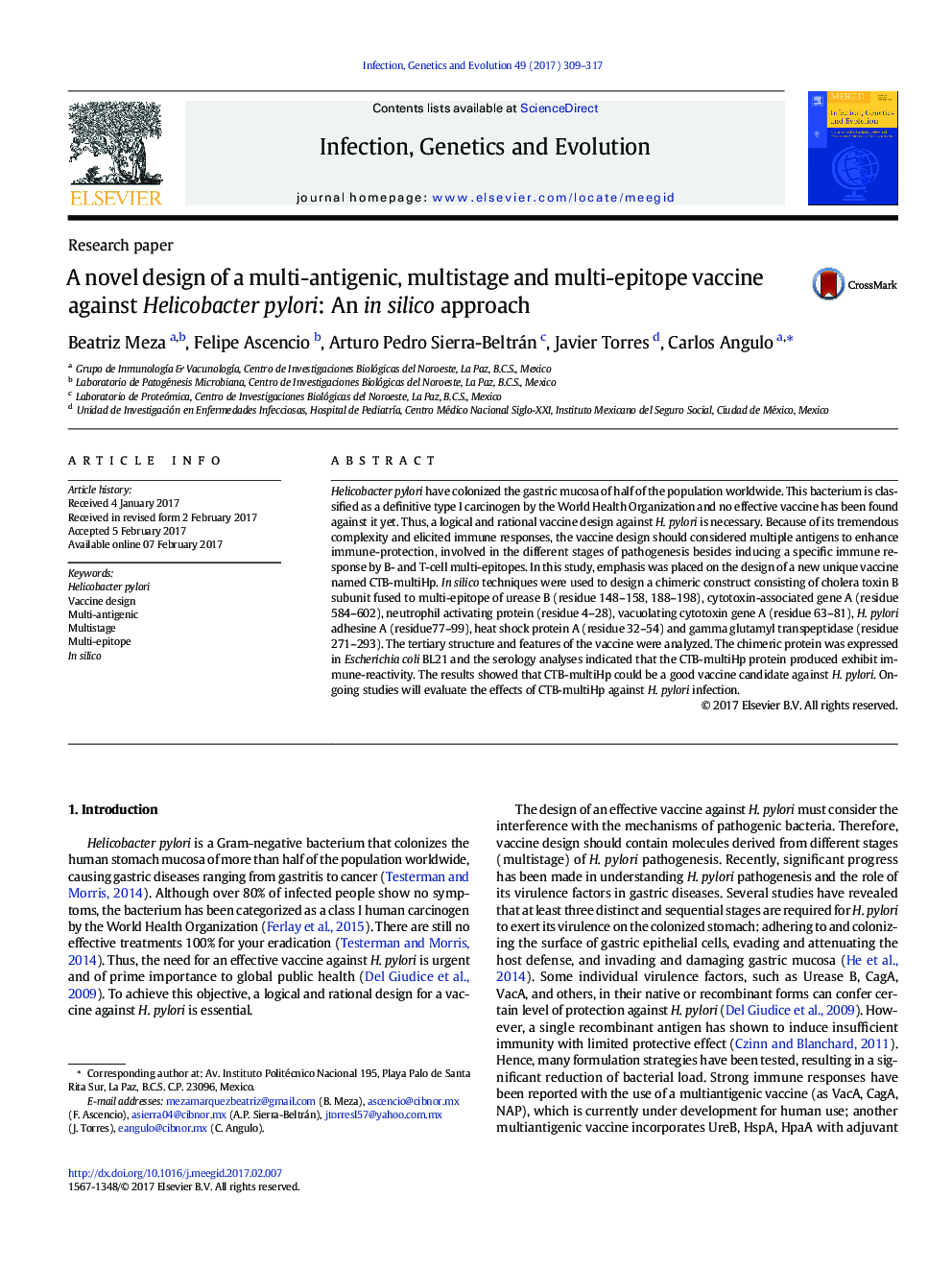| Article ID | Journal | Published Year | Pages | File Type |
|---|---|---|---|---|
| 5590635 | Infection, Genetics and Evolution | 2017 | 9 Pages |
Abstract
Helicobacter pylori have colonized the gastric mucosa of half of the population worldwide. This bacterium is classified as a definitive type I carcinogen by the World Health Organization and no effective vaccine has been found against it yet. Thus, a logical and rational vaccine design against H. pylori is necessary. Because of its tremendous complexity and elicited immune responses, the vaccine design should considered multiple antigens to enhance immune-protection, involved in the different stages of pathogenesis besides inducing a specific immune response by B- and T-cell multi-epitopes. In this study, emphasis was placed on the design of a new unique vaccine named CTB-multiHp. In silico techniques were used to design a chimeric construct consisting of cholera toxin B subunit fused to multi-epitope of urease B (residue 148-158, 188-198), cytotoxin-associated gene A (residue 584-602), neutrophil activating protein (residue 4-28), vacuolating cytotoxin gene A (residue 63-81), H. pylori adhesine A (residue77-99), heat shock protein A (residue 32-54) and gamma glutamyl transpeptidase (residue 271-293). The tertiary structure and features of the vaccine were analyzed. The chimeric protein was expressed in Escherichia coli BL21 and the serology analyses indicated that the CTB-multiHp protein produced exhibit immune-reactivity. The results showed that CTB-multiHp could be a good vaccine candidate against H. pylori. Ongoing studies will evaluate the effects of CTB-multiHp against H. pylori infection.
Related Topics
Life Sciences
Agricultural and Biological Sciences
Ecology, Evolution, Behavior and Systematics
Authors
Beatriz Meza, Felipe Ascencio, Arturo Pedro Sierra-Beltrán, Javier Torres, Carlos Angulo,
